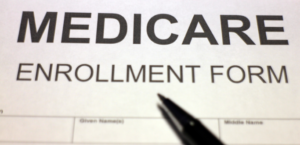They’re like best friends.
Why you need both Medicare Part A and Medicare Part B and what they cover can be found in this article.
If you had a pop quiz on the difference between the coverage of Medicare Part A and Medicare Part B, would you score or choke? Often we are so busy with our lives that we forget – or don’t pay attention to – details about medical insurance coverage. To make it easy for you, here is a handy guide to the primary differences.
Medicare Part A
Medicare Part A is free and is given to you automatically by Social Security when you turn 65 – if you are receiving Social Security benefits. If not, you have to apply. It is known as “hospital insurance.”
For coverage, you must be in a hospital or skilled care nursing facility or hospice for two nights – or three days. You must be admitted by a doctor and the facility must be Medicare-approved.
Part A will cover a semi-private room; meals provided by the hospital; services like lab tests, medical appliances, supplies, rehab therapy, prescription drugs; and professional nurses. There will be a deductible for each benefit period.
In a hospital, you are covered for up to 60 days with no charge, after that, there will a per day fee up to 150 days when coverage ends. In a skilled nursing facility, you are covered for 100 days. After that, you pay all costs. For hospice care, your doctor must say you have six months or less to live. Also, you must have chosen hospice care, i.e., palliative care instead of care designed to cure.
Skilled nursing care coverage includes nursing care, such as injections or changes of dressings, and physical therapy costs. Hospice care includes room and board, doctor services, nursing care, and other services, such as grief and loss counseling.
Medicare Part B
There is a monthly premium for Medicare Part B. This can be deducted automatically from your Social Security benefit payment. It is “medical insurance.”
As with Part A, only Medicare-approved doctors, services and equipment will be covered.
With Part B, you are eligible to receive medically-necessary services anywhere in the U.S. from a doctor or other provider in the provider’s office: a hospital, a home visit, or a long-term care facility. It’s a good idea to check with the provider before you visit to be sure that they are approved and that your visit is covered.
There are other things to watch for. Many of the services covered are only covered once in a 12-month period. These would include a mammogram or a wellness check, among other preventative services. It’s always a good idea to check coverage first. We have given you an overview of coverage here, but there are often extenuating circumstances.
Services not covered by Parts A and B
Dental care, cosmetic surgery, acupuncture, hearing aids, or eye exams for prescribing glasses are not covered. Ordinarily, A or B will not cover emergency room charges or ambulance transport. There are special cases, such as when a critically ill patient would be in danger of dying if not transported.
Since there are co-pays for Medicare Part B services, it is wise to carry Medicare Supplement insurance which can pay for fees you will be charged, like co-pays, that are not covered by Medicare.
Unless you have other medical insurance, it is a very good idea to carry Medicare Part A and Medicare Part B. More than likely, you will use the services covered under B more frequently than the hospital insurance. Better to be safe than sorry.
Need a Medicare Supplement quote?
No need to call a dozen companies.
To compare Medicare supplements in your area now, please enter your zipcode below.














